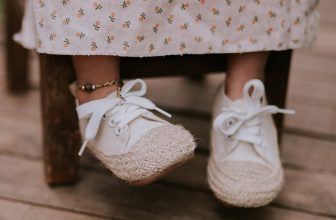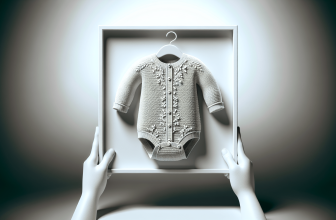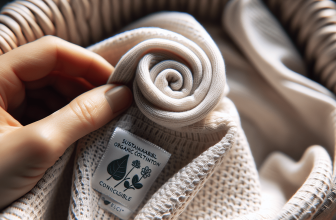Are you a new parent or about to become one? If so, one of the many things you’ll need to consider is choosing the right size in baby clothes. It may seem like a small detail, but getting the size right can make a big difference in your baby’s comfort and overall happiness. In this article, we will provide you with some simple yet effective tips on how to choose the right size in baby clothes, so you can ensure that your little one is always comfortable and cute in their outfits. So, let’s dive in and discover the secrets to finding the perfect fit for your precious bundle of joy!
Choosing the right size in baby clothes is crucial for ensuring your little one’s comfort and style. With so many factors to consider, it can often feel overwhelming. But fear not! We are here to guide you through the process and make it as simple as possible. Whether your baby is a newborn, infant, or toddler, there are certain factors you need to take into account when determining the perfect size for them.

This image is property of images.pexels.com.
Factors to Consider
Age of the Baby
The age of your baby plays a significant role in selecting the right size. Babies grow rapidly, and their clothing size changes accordingly. It is crucial to consider their age to ensure a proper fit that allows for free movement and comfort.
Weight of the Baby
Another essential factor to consider when choosing the right size for your baby is their weight. Different clothing brands have size charts that provide a range of weights for each size. Knowing your baby’s weight can help you select the appropriate size that will fit them comfortably.
Height of the Baby
The height of your baby is yet another factor to consider. Babies come in all shapes and sizes, and their height can vary significantly. With different sizing options available, it is important to consider your baby’s height to ensure their clothing fits them well without being too tight or too loose.
Growth Rate of the Baby
Every baby grows at their own pace, and considering their growth rate is crucial in selecting the right size. Some babies have growth spurts, while others grow steadily. Keep in mind your baby’s growth rate so that you can anticipate their clothing needs and choose sizes accordingly.
Understanding Sizing Labels
Different Sizing Systems
Navigating the world of baby clothing sizes can be perplexing, as different brands use various sizing systems. Some brands use “preemie,” “newborn,” and specific month ranges, while others use numerical sizes like “0-3 months” or “12-18 months.” Understanding the differences between these sizing systems can help you make informed decisions when choosing the right size for your baby.
Conversion Charts
To make your life easier, many online sources provide conversion charts that help you translate sizes from one system to another. These charts enable you to compare and choose the appropriate size across different brands, making it convenient and hassle-free.
Specific Brand Sizing
While general sizing guidelines exist, it’s important to note that specific brands may have their own sizing peculiarities. Some brands might run larger or smaller than others, even within the same size range. Therefore, it’s always a good idea to check the specific brand’s sizing information or customer reviews for any insights before making a purchase.
Tips for Accurate Measurement
Using a Tape Measure
Accurately measuring your baby is essential for selecting the right size. Use a soft tape measure to measure their height and chest circumference. Make sure the tape measure is snug but not too tight, and take note of the measurements. Having precise measurements will help you choose the size that best fits your baby’s unique body shape.
Measuring the Chest
To measure your baby’s chest circumference, wrap the tape measure around the widest part of their chest, just under the armpits. It should be snug but not constricting. Keeping track of their chest measurement will help you find clothing that provides a comfortable fit without being too loose or tight.
Measuring the Length
To measure your baby’s length, lay them flat on their back and stretch the tape measure from the top of their head to the bottom of their feet. This measurement will give you an idea of their height and help you select clothing that accommodates their length.
Choosing the Right Size for Newborns
Preemie Size
If your baby was born prematurely or is smaller in size, you may need to consider preemie-sized clothing. Preemie sizes are designed to fit babies who weigh less than 5 or 6 pounds. These specially designed clothes ensure a comfortable and snug fit for tiny newborns.
Newborn Size
Newborn-sized clothing is generally suitable for babies weighing between 5 and 8 pounds. It is designed to fit newborns comfortably during their early weeks. Keep in mind that babies grow quickly, so your little one may outgrow these sizes faster than you anticipate.
0-3 Months Size
The 0-3 months size range is ideal for babies weighing between 8 and 12 pounds. It provides a little more room for growth compared to newborn sizes, making it a great option if you want clothing that will last a bit longer as your baby grows.

This image is property of images.pexels.com.
Choosing the Right Size for Infants
3-6 Months Size
As your baby transitions from a newborn to an infant, the 3-6 months size range should fit them well. Designed for babies weighing between 12 and 16 pounds, this size range offers more room for their growing bodies. It allows for comfortable movement while still providing a snug fit.
6-9 Months Size
Babies between 16 and 20 pounds will likely fit into the 6-9 months size range. This size range accommodates their increasing mobility and provides room for growth. It is essential to ensure that the clothing allows for free movement, especially as they start crawling and exploring their surroundings.
9-12 Months Size
As your baby approaches their first birthday, the 9-12 months size range will be suitable. Designed for babies between 20 and 24 pounds, this size range allows for comfortable movement and growth. Consider their height as well, as some babies may need the next size up if they are taller than average.
Choosing the Right Size for Toddlers
12-18 Months Size
For active toddlers weighing between 24 and 28 pounds, the 12-18 months size range is a great option. Toddlers at this age are constantly on the move, so their clothing should be comfortable and allow for unrestricted movement. Look for clothes that have stretchy and flexible materials to accommodate their energy and playfulness.
18-24 Months Size
The 18-24 months size range is suitable for toddlers weighing between 28 and 32 pounds. At this stage, toddlers are becoming more independent and active. Opt for clothing that allows for easy dressing and undressing, as well as accommodates their growing bodies.
2T, 3T, and 4T Sizes
Once your child reaches the age of two, you will find sizes labeled as 2T, 3T, and 4T. These sizes are designed for toddlers who are around two to four years old and usually correspond to their age. These sizes offer room for growth and allow for comfortable movement as your toddler continues to explore the world around them.

This image is property of images.pexels.com.
Considering the Clothing Style
Stretchy vs. Non-Stretchy
When choosing baby clothes, consider the stretchiness of the materials. Stretchy fabrics like cotton blends or jersey knits can provide a comfortable and flexible fit, allowing for easy movement. Non-stretchy fabrics, such as denim or corduroy, may look stylish but can be less forgiving in terms of fit. Strike a balance between style and comfort by opting for clothes with some stretch.
Selecting According to Season
The season also plays a role in choosing the right size for your baby. In warmer months, you may want to opt for lighter and more breathable fabrics that allow for better airflow. In colder months, consider layering your baby’s clothing and selecting slightly larger sizes to accommodate additional layers for warmth.
Ease of Dressing and Diaper Changes
Babies require frequent diaper changes, so choosing clothing that allows for easy diaper changes is essential. Look for clothes with snaps, zippers, or other convenient closures that make dressing and changing diapers a breeze. This will save you time and effort while ensuring your baby’s comfort.
Consulting Size Guides and Reviews
Online Retailers’ Size Guides
Many online retailers provide size guides for their clothing collections. These guides typically provide detailed measurements for each size, allowing you to compare them to your baby’s measurements. Refer to these size guides to ensure you select the right size from a specific brand.
Reading Customer Reviews
Customer reviews can offer valuable insights when deciding on the right size for your baby. Other parents often share their experiences with a particular brand’s sizing. These firsthand accounts can provide a helpful perspective on whether a specific brand’s size runs larger, smaller, or true to size.
Sizing Recommendations from Other Parents
If you have friends or family members who have children, don’t hesitate to seek their advice on sizing. They may have firsthand experience with different brands and can offer valuable recommendations based on their own experiences.
Accounting for Growth and Wearability
Choosing Slightly Larger Sizes
Since babies grow quickly, it’s often wise to choose slightly larger sizes to allow for growth. Clothes that are a little roomier can last longer and provide an extended period of wear. However, ensure that the clothing is not oversized to the point of being uncomfortable or posing a safety risk.
Adjustable and Expandable Features
Some baby clothes come with adjustable features such as elastic bands or buttons that can be loosened or tightened. These adjustable and expandable features can help accommodate your baby’s growth, allowing the clothing to fit well for a longer period.
Layering with Onesies or Bodysuits
Layering is a great way to adjust the fit of your baby’s clothing. Pairing onesies or bodysuits with other clothing items, such as pants or jackets, allows for flexibility in sizing. Layering also helps regulate body temperature, as you can easily add or remove layers as needed.
Making the Most of Return Policies
Importance of Flexibility
Even with careful consideration, there may be times when the size you choose doesn’t fit as expected. That’s why it’s essential to have flexibility and be aware of a store’s return policy. Purchasing from retailers with generous return policies allows you to exchange or return items if they don’t fit well.
Checking Return and Exchange Policies
Before making a purchase, familiarize yourself with the return and exchange policies of the store or online retailer. Be aware of any time restrictions or conditions for returning or exchanging items. This knowledge will give you peace of mind and the freedom to make adjustments if needed.
Purchasing from Reputable Sellers
To ensure a smooth shopping experience, it’s best to purchase baby clothes from reputable sellers. Online retailers and brick-and-mortar stores that have a positive reputation are more likely to provide accurate sizing information and fair return policies. Research the seller’s reputation and read reviews from other customers to make an informed decision.
Choosing the right size in baby clothes doesn’t have to be a daunting task. By considering factors such as age, weight, height, and growth rate, understanding sizing labels, following measurement tips, and considering the clothing style, you can confidently select the perfect size for your little one. Consult size guides, read customer reviews, and take advantage of return policies to ensure a positive shopping experience. Remember, the right fit will not only keep your baby comfortable but also allow them to explore and grow with ease.








